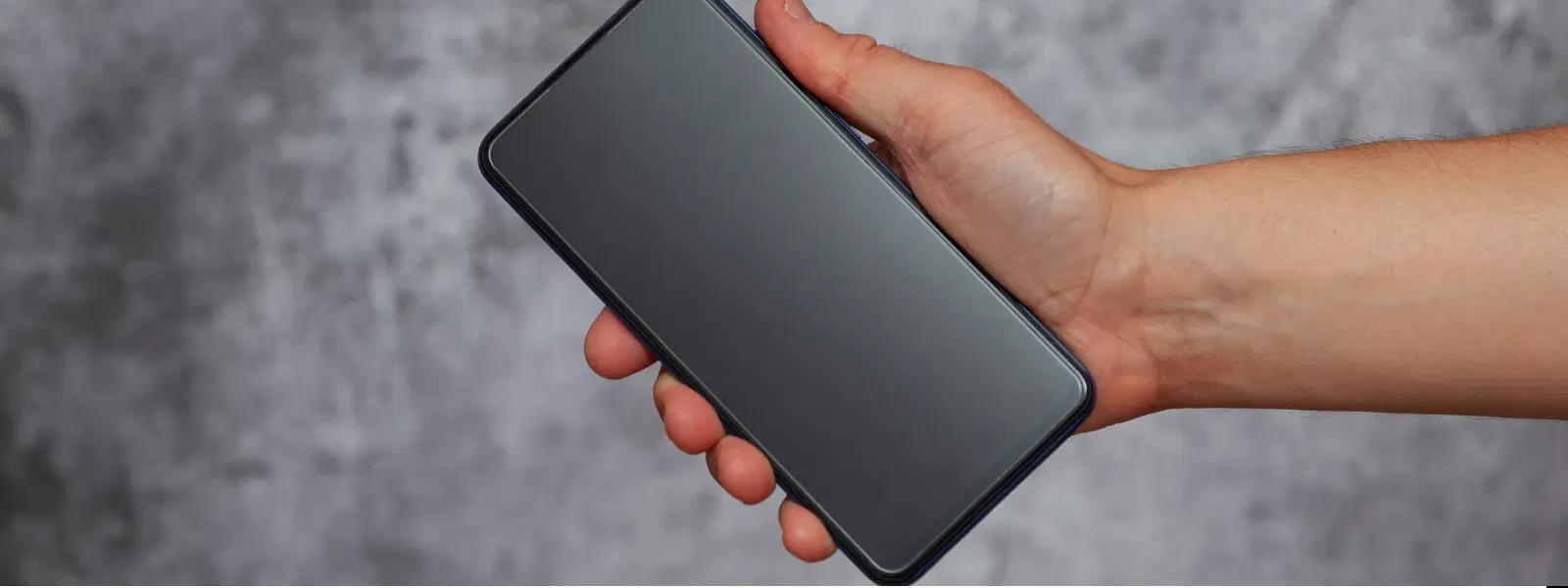
Consumer Electronics
•06 min read

Buy stuffcool Mighty Tempered Glass for NOKIA 7 Plus (9H Hardness) online at best prices from Croma. Check product details, reviews & more. Shop now!
A cracked phone screen can be frustrating, but did you know you can fix it yourself at home without spending a fortune? Tackling phone screen repair on your own not only saves money but also offers a chance to learn a valuable skill that you can use in the long run. In this comprehensive guide, we'll walk you through how to repair a phone display at home, covering essential tools, step-by-step instructions, and expert tips that ensure your DIY effort is successful.
Cracked screens, scratch marks, the emergence of dead pixels, and unresponsive touch are all common issues that can affect your smartphone. Each of these problems requires a different repair approach. For instance, minor scratches or surface cracks might be stabilised with temporary fixes, while more extensive damage will necessitate a complete replacement of your phone display.
Before diving into a DIY repair, it’s important to determine whether the phone damage is something you can manage on your own or if it requires professional intervention. If you notice visible, superficial cracks or scratches, then a detailed DIY guide might be all you need. However, if the damage has compromised internal components or impacted functionality like the touchscreen, additional precaution is needed. Ensure that when considering repair, you evaluate both the physical cracks and internal issues so as to decide on the best solution for your device.
To achieve a successful repair, gathering the right set of tools is paramount. Most screen repair kits come with everything you need: a replacement screen, small screwdrivers, adhesive tape, and even suction cups to help you remove the damaged display. Additionally, having a microfiber cloth at hand is wise for cleaning the inner surfaces. These kits are often affordable and available for most popular smartphone models, making them an excellent option for budget-conscious DIY enthusiasts.
Your safety—and that of your phone—should always come first. Begin by backing up all of your phone data; you never know when unexpected glitches might occur. Ensure that you work on a clean, static-free surface and wear gloves to protect against sharp edges. Disabling the battery is another essential precaution to prevent accidental short circuits as you work on the delicate internals of your phone. Remember, a well-prepared workspace can mean the difference between a smooth repair and potential mishaps.
If the damage seems limited to minor cracks or scratches, consider temporary solutions that can stabilise the issue. For instance, applying packing tape or placing a screen protector over the damaged area may help hold the fragments in place and prevent further spreading of the cracks. Some quick-fix home remedies like gently polishing out minor scratches using a dab of toothpaste can offer short-term relief until you decide on a permanent repair. While these fixes aren’t long-term solutions, they provide a stopgap measure to help you continue using your phone safely.
For a more permanent fix, you might consider replacing the cracked screen entirely. Begin by carefully disconnecting your phone’s battery and removing any screws that secure the existing display. Knowing the exact sequence for disassembly is vital; take note of each part and retain any small components safely. Once the damaged screen is removed, use a microfiber cloth to clean the phone frame thoroughly. This helps to remove any dust or residue that may prevent proper adhesion of the new screen. With the replacement screen secured in place using the adhesive provided in your repair kit, reassemble your phone carefully. It's important to be patient and cautious when applying adhesive to avoid air bubbles or misalignments that could affect the touch functionality.
Occasionally, damage to the screen might extend to the digitiser, which is responsible for touchscreen functionalities. If you notice that your phone’s touch sensitivity is compromised even after a replacement, you might need to recalibrate the device. This can often be done using settings available on your phone or through a built-in troubleshooting guide. In many cases, if recalibration does not resolve the issue, replacing the digitiser as part of the screen repair might be advisable. This process demands extra care, so refer to detailed instructions provided in the repair kit or online guides that help simplify such substitutions.
Pro Tip: Know When DIY Isn’t Enough
Did you know? If your phone screen damage involves internal components like the LCD or digitiser, it’s best to consult a professional to avoid further harm to your device.
Throughout your DIY journey, there are several pitfalls to be aware of. One common error is using improper tools that may worsen the damage rather than repair it. Applying too much force while removing the damaged screen could break fragile components inside your phone. Instead, use gently steady movements and follow the step-by-step instructions closely. Patience and precision are essential to ensure that your DIY effort is a success and that your phone suffers no additional issues.
Once you have successfully replaced your phone screen, the maintenance phase begins. Protect your investment by using a durable case and a high-quality screen protector. Regular cleaning with a soft cloth can prevent the buildup of grime and reduce the chance of scratches. By adopting these simple practices, your repaired screen will remain in great condition, allowing you to enjoy your phone for many more years.
There are certain instances where attempting a DIY repair may not be the best solution. If your phone damage appears to be extensive, especially when it affects internal parts more severely, professional repair services might be a more reliable option. These services are equipped with the tools and expertise needed to handle complex damage, ensuring your device is restored to full functionality without further risks.
Comparing the cost of a DIY repair to that of professional services often highlights the benefits of tackling the issue yourself. While professional repair might appear more expensive initially, particularly when internal components are at risk, the long-term value of learning to repair your own devices can be significant. Investing in quality repair tools and kits can help you handle multiple repairs in the future, making it a wise choice for those who often face minor issues. However, always evaluate the extent of the damage first; a well-executed DIY solution can be incredibly economical, while intricate internal damage might be better handled by experts.
Begin by assessing the damage. For minor cracks or scratches, temporary fixes like adhesive tape or screen protectors can be effective. For more significant damage, follow a step-by-step process to remove the damaged screen, clean the area, and securely install a replacement.
Yes, many issues related to phone screen damage can be resolved at home with a proper DIY repair kit and careful instructions. However, if the damage affects internal components, it might be safe to seek professional assistance.
Gather your repair tools, carefully disconnect the broken screen, clean the frame, and install the replacement screen using adhesive. Ensure you take all necessary safety precautions throughout the process.
Temporary solutions such as applying packing tape or a screen protector may help stabilise the damage in a short time frame. For a lasting repair, a thorough replacement of the screen is necessary.
The cost varies depending on the required tools and replacement parts, but generally, a DIY repair is much more affordable than a professional service.
In summary, repairing a cracked phone screen at home is a cost-effective, empowering, and practical solution for dealing with minor to moderate damage. By following the careful step-by-step guide and utilising the right tools and safety measures, you can restore your phone’s functionality and extend its lifespan. This approach not only saves money but also adds to your technical know-how—an essential asset in today’s tech-savvy world. The experience is rewarding in many ways, from enhancing your DIY skills to enjoying the extra benefits such as earning NeuCoins rewards, which further enhance your smart shopping journey on Tata Neu. For those moments when your phone may need urgent attention, remember that with Express Delivery options for orders placed before 6PM in selected locations, reaching out for additional hardware or kits is as convenient as ever.
Embracing self-reliance in home smartphone repair aligns with a modern lifestyle where technology and practicality converge. Continue exploring such valuable DIY tips and discover how everyday challenges can turn into opportunities for learning and growth on your journey with Tata Neu.